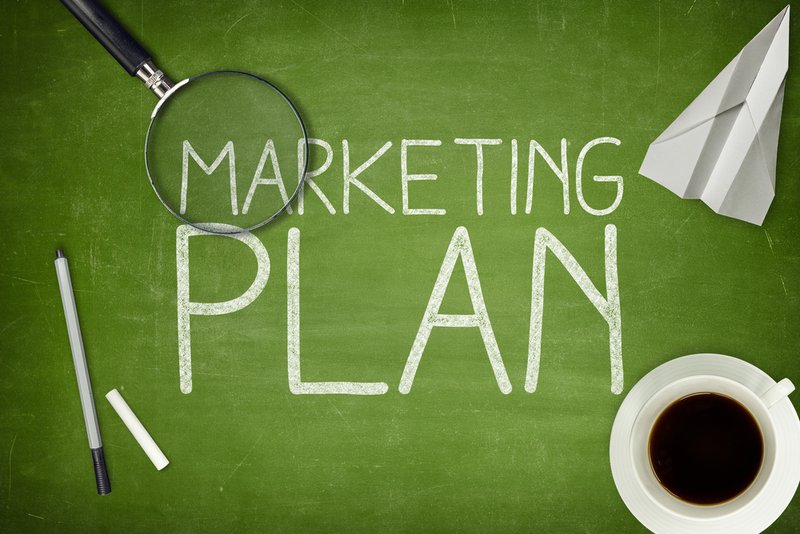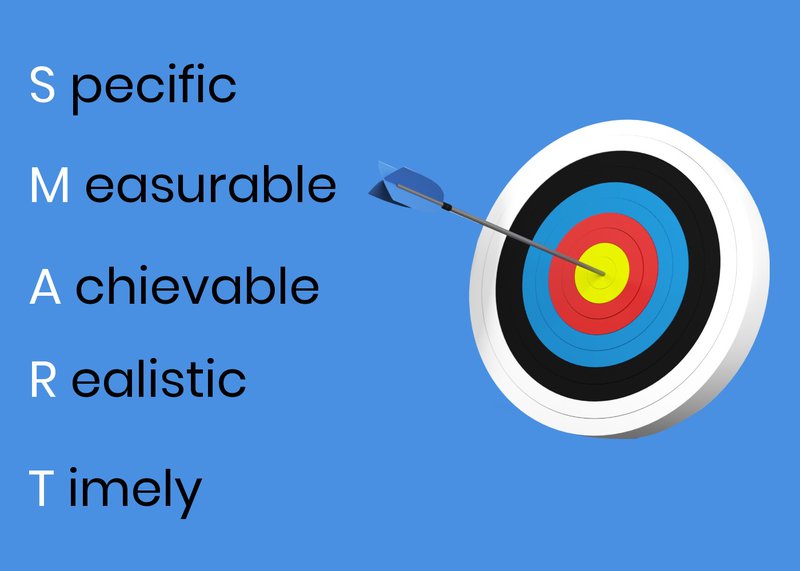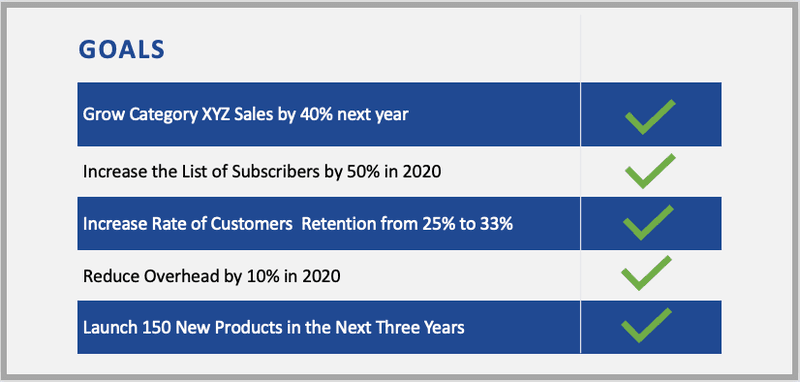A strategic marketing plan goes much further than the editorial calendar or a digital marketing campaign. Scheduling social media, creating email marketing campaigns, or updating the content on your webpage is essential. Still, the concept behind the scenes determines whether your marketing tactics will be successful.
A strategic marketing plan describes the mission, vision, processes, activities, and budget that guide the company’s products and services to reach a target audience and create a competitive advantage in its market.

The strategic marketing plan should be your blueprint for everything that goes out to the public. This means it tells you when to post, where, and how to create compelling content for the proper channels.
When you have this plan in front of you, you can create tactics and future goals. If you have already been reading this article, without a doubt, you are taking the proper steps forward. Let’s first go into more detail to understand the concept.
Table of Contents:
- What is Marketing in Business?
- What Is A Marketing Plan?
- What is a Strategic Marketing Plan?
- What Is The Order Of Strategic Marketing Plan Actions?
- How To Create A Strategic Marketing Plan?
- Strategic Marketing Plan Steps
Before going to the plan, let’s clarify the marketing concept in an organization.
What is Marketing in Business?
Marketing is an exciting and dynamic field that can significantly impact individual businesses and the economy. It involves creating unique and compelling messages to engage customers, build brand loyalty, and drive sales.
Marketing is more than just advertising; it’s a strategic discipline rooted in understanding what consumers want, how they think, and their needs in the marketplace. According to AMA, marketing creates, communicates, delivers, and exchanges customer offerings.
Marketing builds customer relationships by providing value through products or services that meet their needs. This requires getting creative with how those products are presented to potential buyers and analyzed to optimize campaigns for maximum returns on investment. Not only that, marketing has a set of functions in the organization:
- Distribution
- Financing
- Marketing Information Management
- Pricing
- Product And Service Management
- Promotion
- Selling
To manage all these intricacies and execute well, every company should have a marketing plan attached to its strategy. This should follow the lead and goals for the next 3 to 5 years, getting down to the following year. That’s where a marketing plan takes place.
What Is A Marketing Plan?
You must have a solid marketing plan to launch a successful product or service. A marketing plan is essential for any business and can be the difference between success and failure.
A marketing plan gives an organization direction and focuses on its efforts so that it can reach its desired goals. It outlines the strategies, tactics, costs, and estimated results of specific marketing efforts over a given period of time. A well-crafted marketing plan should also include research on customer demographics, competition, target markets, market trends, and other factors that may impact your business’s success.
Ensuring it aligns with your company’s overall vision and goals is the key to creating an effective plan. Creating a comprehensive strategy will ensure you can reach those objectives in the most effective way possible.
A comprehensive marketing plan can be instrumental in helping to define specific objectives, strategies, and tactics essential for any successful venture in the short and mid-term. It directs how you will use your resources to reach your target market and ultimately increase profits most effectively.
What Is A Strategic Marketing Plan?
A strategic marketing plan is a blueprint for a company’s marketing activities for the coming years. It gives the company an idea of how to reach its target audience, what kind of message it should communicate, and where it should be shared to drive maximum mid to long-term sales.
The plan plays a vital role in structuring a marketing strategy. It lays down the direction in which the company wants to take its brand and how they want to achieve that end goal systematically.
Creating this plan requires careful research, thoughtful consideration of your budget and resources, and detailed planning of both short-term and long-term objectives. At its core, a strategic marketing plan should provide insights into how the company plans to achieve its business goals while considering factors such as the market landscape, competition, customer trends, and more.
The resulting document provides clear direction on achieving the desired goal efficiently with maximum return on investment.
What Is The Order Of Strategic Marketing Plan Actions?
The order of strategic marketing plan actions will vary from company to company. However, most plans begin with the broad goal of marketing a product or service and then work their way down to the details of creating an advertising campaign.
The next step in many plans is specifying the target audience and creating a strategy to target them. Then the company can decide how to promote its brand and what messages they want to convey.
An excellent example of this is Gatorade, which has a well-known marketing plan that includes elements such as:
- Identifying your target audience
- Defining your brand’s personality
- Developing your brand’s voice
- Creating a brand identity
- Building your brand’s story
Here we will describe the detailed process.
How To Create A Strategic Marketing Plan?
Your marketing strategy will be more systematic if you have a strategic marketing plan that lays down the direction in which the company wants to take its brand and how they want to achieve that end goal systematically.
To create a market plan, you must define your target audience and identify your ideal customer. Based on the information you gathered from research and surveys, they will decide how long it would take them to make a purchase decision.
Make sure all stakeholders are involved. To get a holistic view, involve critical members from different departments like finance, operations, HR, and key customers.
The last factor that influences the creation of a market plan is prioritization.
Prioritize goals based on urgency. Define short-term (quick wins), mid-term (mid-length wins), and long-term (longer-term wins).
Let’s detail further the following steps to create the marketing plan:
- Find Out the Reason Why
- Define Your Vision and Mission
- Develop A Target Audience
- Define your Unique Selling Propositions
- Establish Your Goals and KPIs
- Distribution
- Create A Budget
- Define Your Marketing Promotion and Communication
- Define Your Tasks and Timelines
- Follow-Up
Strategic Marketing Plan Steps
The strategic marketing plan includes various components like introducing a new product, communication strategies, promotion themes, public relations, and advertising.
Let’s dive deep into the steps to accomplish that.
1) Find Out the Reason Why
This means finding the reason your company exists and why you created it in the first place, besides profit and money. This powerful statement can drive your company’s plans for the future.
You could have started your company to improve community interaction and bring the world together, like Facebook, or you were willing to provide a computer on every desk and in every home, like Microsoft, or even create a better everyday life for people, Ikea.
Most companies are created for some reason more significant than their organization or next year’s budget goals.
This reason why is presented by Simon Sinek, who emphasizes that the “why” influences the “how” (processes, tools, platforms, and people) and “what” (products and services).
Knowing your company’s more significant reasons for existence will drive your company to succeed. Below is a diagram showing the Microsoft example superficially.

2) Define Your Vision and Mission
Vision for companies represents something ideal.
- Ideally, how would my company be in five years?
- What kind of positive impact will it generate on the world?
It’s more a way of exposing the reason for its existence in an inspirational sentence.
For Microsoft, the vision is:
To help people and businesses throughout the world realize their full potential.
Rephrased in their current website:

Related to Microsoft’s mission, they show a much more concrete goal. The sentence is more down to earth:

Hubspot lists different mission statements below:

The “why” of your company’s mission and vision will represent the three main pillars of your strategic marketing plan. They will give you the basis to consider what your company wants and how it can accomplish that.
In the next step, you will define the “what” and the “who” of your strategic marketing plan, which means your unique selling proposition and audience.
3) Develop A Target Audience
It doesn’t matter what your company’s business is about, and there are always specific consumer demands that can be easily deciphered.

It has to be a meticulously designed profile that will, in turn, help you in deciding where to concentrate your funds and energy. This can be done by making a demographic target market profile. It’ll include essential components like gender and income level.
Also, it will clearly outline the probable demands consumers of a particular area have. It might seem too minor a detail, but the purchase motivation and needs can sometimes differ drastically in two different locations.
Types Of Segmentation
Some segmentation of your audience segmentation can be done by demography, geography, behavior, or aptitude.
- Demography: the name explains the term. Here you can choose your audience as the millennials or baby boomers. You can segment by income or stage of life, such as a recently married couple.
- Geography: Is the United States your target? If you have a digital company that sells digital products, why not expand to English-speaking countries? Defining your audience based on where they live or consume is also a good option, but it can be too broad. You may think about starting small, focusing on a city or a neighborhood, before targeting the whole world.
- Behavior: In this case, you may want to target vegans or look for locally-grown products. The way they behave when consuming a product or service is what limits their segment.
- Aptitude: If they buy products because they want the product to represent themselves or their self-brand, such as a nice car or a fancy grill, they are buying because they have an aptitude toward this product. This is where the segment is the person’s aptitude for purchasing a product or service.

Hence, you must make a target market profile to properly gauge the efficacy of a full-fledged marketing campaign in a particular area. It’ll also channel your strategic marketing plan and help you concentrate where the chances of conversion are high.
4) Define your Unique Selling Propositions
When you build a strategic marketing plan for a client or your own company, you must start with the basics, no matter the business type.

After remembering why your company existed in the first place, which will inspire your vision and mission, you should continue by determining what the company does and who it serves. You can guarantee a clear picture of their target audience when you nail this down in one or two sentences.
Developing your USP
To be successful with your offer, you want to move on to determine the company’s unique selling proposition.
Oddly, with all the competition in the marketplace, other businesses do precisely what your company does, making it extremely important to define a differentiation that sets your company apart.
Think, Why would someone order from your company versus your competitors? Define USP based on what your target customers are looking for.

Although this was mentioned above, you want to dig deep into your company’s target market since your audience will affect your offer, the product or services development, product features, USPs, price points, and many other marketing factors.
5) Establish Your Goals and KPIs
Set your goals. Like anything, you need to set your goals before you can begin. To measure if your marketing is successful or not, you need goals in place to measure and track.
You want to set SMART goals for all of these. This means they must be specific, measurable, attainable, relevant, and time-bound.
When you create SMART goals, you give yourself and your client something to measure throughout marketing campaigns.

You will need goals for a few areas: your website, social media, online marketing, paid ads, and sales. Prioritize and measure them. Make it easy to follow up with your KPIs (Key Performance Indicators).

6) Distribution
Now that you have defined and approved company details, you want to move forward with the distribution plan under the strategic marketing plan.

How customers find and receive your products has a lot to do with how you will be marketing.
Do you sell a digital product, provide a service, or ship goods to the customer after purchase? Are you using a distributor, a client retailer, selling in your stores, or selling door-to-door?
For example, Warby Park chose to be an eCommerce company against every other glasses store. In this case, they send five glasses to the consumer, giving them the benefit if they choose glass in the first batch.

On the other hand, Whole Foods had brick-and-mortar stores first but started opening their online eCommerce a few years ago, which intensified after Amazon’s acquisition.

Currently, Wholefoods offers eCommerce with fast delivery.

7) Create A Budget
A strategic marketing plan almost always has to consist of a proper financial plan. The distribution of funds to your marketing strategy’s different operations needs to be decided beforehand.

Eliminate any doubts regarding the budget and try to distribute it how it should be. Distribution here shouldn’t be equal as all aspects of marketing strategy might not be efficient.
Concentrate most of your funds where you get a better chance of conversion and can score leads. Look for the low-hanging fruits.
Keep checking your strategy every once in a while to understand where to spend the money and where not to. Try to understand what kind of advertising best suits your company’s business.

After all, different types of businesses have to be promoted and advertised differently. Ensure your client realizes why a specific type of advertising isn’t good for his business and another.
The more convinced your client is, the better the plan’s execution will be. Professionals often ignore these factors, resulting in a weak and inefficient Marketing plan. Avoid this at all costs and plan the spending keeping the probability of returns in mind.
8) Define Your Marketing Promotion and Communication
This section covers all the paid advertising your company will take part in. This can include paid search advertising, Facebook ads, SEO, promoters, and more.
Anything not completed organically through online marketing and costs money outside of time (and maybe some tools) counts as paid advertising.
You want to set a budget for the various paid advertising methods your company will use and define its campaigns.
After creating a Marketing plan and following through, you want to perform check-ups for your company. This is where you look into their analytics and determine what is working and what is not.

This will allow your team to optimize the strategic marketing plan and focus on the most effective tactics.
You also want to have a section of all the possible offers you will be marketing and selling.

Define the steps a potential customer has to go through to become a customer. And then, they need to go through the steps to become loyal, return customers. This is where you start defining your conversion strategy to turn leads into customers.

It may look like this: discovery, research, follow, engage, purchase, enjoy, be followed up with, and purchase again.
Every company has its own ‘flow’ that its customers take to become loyal and repeat customers.
9) Define Your Tasks and Timelines
Now it’s time to outline all organic, inbound marketing strategies that will be used. This included SEO, social media, blogging, email marketing, and your website. This section is a calendar of all the marketing tasks you should be doing.

A great way to break it down is to list all online marketing tasks in the following sections: daily, weekly, monthly, quarterly, and yearly. Your team can apply the simple task list to their editorial calendar.
Using the sections above, you also want to include a table of ideas for content that will be successful.

For example, suppose you tell your client to blog every week. In that case, you want to give the categories they should be blogging on, and how often they should cover each category will also determine the nature of your strategic marketing plan.
You can also include a section that talks about possible and planned collaborations.
A list of “power people” for promotions, guest blogs, and future advertising can be handy for a company. This refers to when they need help promoting a service or product.
10) Follow-Up: Constant Reviewing Will Do Wonders for Your Strategic Marketing Plan
The key to an excellent strategic marketing plan is constantly measuring how far you have come and filling the loopholes.

For the entirety of the plan, you need to keep in mind the nature of your company’s business. When your project strays away from the business’s basic requirements, it ceases to be a good business plan.
Given that you know your company’s intricacies and what kind of promotion it demands, you will have a good business strategic marketing plan.
Numbers are essential when it comes to gauging the efficacy of any business plan. It is not a good plan if it fails to give a stable output in numbers. Hence, ensure you have the data to weigh the outcome of the efforts.

Hence, it doesn’t matter how good your plan looks on screen. It would help if you weighed it based on the output it gives. As soon as you see the result faltering, you’ll do good to examine where the problem lies meticulously.
After all, a marketing plan might appear flawless on paper, yet, its efficiency can only be examined after it is implemented.
Hence, constant reviewing on whether or not your plan is meeting the objectives comes in handy. It helps you change a plan before it’s too late, and the strategy is beyond repair.

Christian has over ten years of experience in marketing agencies. Currently, he has been dedicating his time to a tech startup and also writing for major publications. He loves podcasts and reading to keep up with the latest trends in marketing.

I loved the information. Fantastic article! However, I don’t agree entirely that this is the right order to do the strategic plan. For my company, for example, I wouldn’t invest any more time if I were not 100% sure about the budget for it. So, I would pull the budget creation as one of the first steps.
Nice, will use these steps 🙂 Thanks 🙂
Thank you very much for the invitation :). Best wishes.
PS: How are you? I am from France 🙂
Hey, welcome to Totempool!
Your article is really great. Thanks for sharing valuable information with us. We also provide best field service management software. For more information you can visit our site: Fieldpromax.